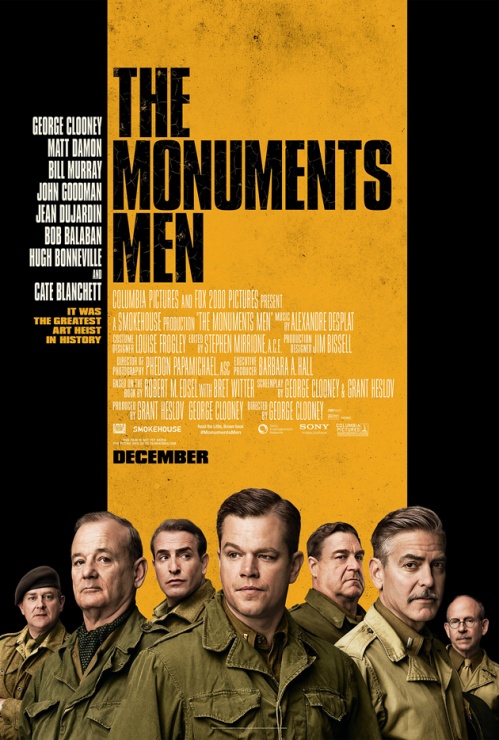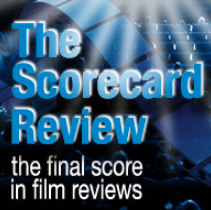 The Monuments Men
Directed by: George Clooney
Cast: George Clooney, Matt Damon, Cate Blanchett, Bill Murray, Bob Balaban, Jean Dujardin, Hugh Bonneville
Running Time: 1 hr 58 mins
Rating: PG-13
Release Date: February 7, 2014
The Monuments Men
Directed by: George Clooney
Cast: George Clooney, Matt Damon, Cate Blanchett, Bill Murray, Bob Balaban, Jean Dujardin, Hugh Bonneville
Running Time: 1 hr 58 mins
Rating: PG-13
Release Date: February 7, 2014
PLOT: A group of men are sent to Europe during WWII to rescue pieces of art from the ownership of the Germans.
WHO'S IT FOR? Even fans of movie parties with fun actors might find The Monuments Men lacking in some spirit.
OVERALL
Actor/director George Clooney isn't able to fully share his enthusiasm for a piece of American history that truly intrigues him with The Monuments Men, a star-filled party with only its alternative perspective of famous history to keep it unique. Instead of fighting in a war, it is the adventure and espionage to find art, trying to rescue gems from the Germans undisclosed areas before they are destroyed, or before Russians get to them and keep the pieces for themselves.
Within its few impassioned monologues in a film built on rally speeches, ball-busting, and a recurring tired joke about Matt Damon having a poor knowledge of French grammar, The Monuments Men does however show its passion for art. As a striking voiceover from Hugh Bonneville chimes in one of the film's more extended sequences, "Art belongs to all." Earlier in the film, while preparing his troops of art historians to enter a zone with uncertain lines of war and peace, he posits the mission as one to save history; that people may be wiped out and they can come back, but art, a representation of the achievements in their lives and culture, is irreplaceable. It's enough to inspire a visit to an art museum, but as surrogate to the film's specific experience, not enough to excite a viewer into watching Clooney's gang round up portraits from under the noses of wordless and sneering Germans and Russians.
With this film and by following such a title, Clooney certainly has a reverence for the story's truth, and the men involved who risked their lives on behalf of art, not just one country's dream of economic conquest (or "gold," as noted in a funny meta piece of dialogue considering this film's accidental association with award season friendliness). They are introduced as art folk, but are meant to be taken all as soldiers. Often, these men of monument may be shown with their head held high, physically resisting the emotional stress of their situation, but there are moments where their eyes show true vulnerability. Grief is expressed in this movie with the watering of the eyeballs, a benefit of loading up a cast with such capable men, and an expression that strikes deeper in some moments more than others.
The Monuments Men takes place in a standoff aspect of world history, toward the very end of the war, which might explain its very unique tone that essentially impedes it from really getting a foot on the ground before it takes off. It presents an image of 1943-1944 Europe in which the pieces are slowly coming back together, but there are a few hitches where the impact of war is real. These darker moments do provide a few buzzes of tension, and complicate a tone that sometimes completely sidesteps any type of conflict. Some grave sequences are certainly unexpected as well, considering that Clooney handles most of the movie's actual art collecting like the story is so light it is very close to blowing away.
Clooney handles his cast with the film's trademark lightness, picking names who already provide context just by recognizing them from other movies. Character construction for these men who are often dispersed in smaller groups is one of this story's smaller priorities, allowing the spaces to be filled by what we already think of post-Wes Anderson Bill Murray & Bob Balaban, or how we still think of Matt Damon as a clumsy upstart, or now think of Jean Dujardin as a slick, suave Frenchman. Clooney carries this same ease in getting into character as well, providing maybe a little gruff in his voice and allowing some salt to grow in his hair. But he keeps the same assurance within his role, especially in crisp monologues.
The one who works hardest is of course Cate Blanchett, a reminder of the seriousness within the quest, and the expansive grasp the Germans had on art. She doesn't get to bandy with the boys but she does show hope, as well as a world in transition of soon being able to repair what has not already been completely destroyed.
Considering the wall-to-wall parade-ready score by Alexandre Desplat, replete with marching snares and a whole bunch of brass, old soul Clooney is aiming to edify these men with the old-fashioned Hollywood war movie they never got, with heroic accommodations in tact. Though filled with name-dropping to art that is often glossed over, its intellectual neediness is light, through a subject (World War II) that is heavy. While there's absolutely nothing that says Clooney had to make a piece of art himself; he does, however, stumble in making a more-than-decent Hollywood film.
FINAL SCORE: 5/10
